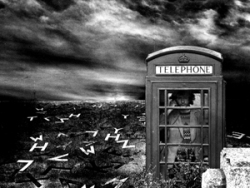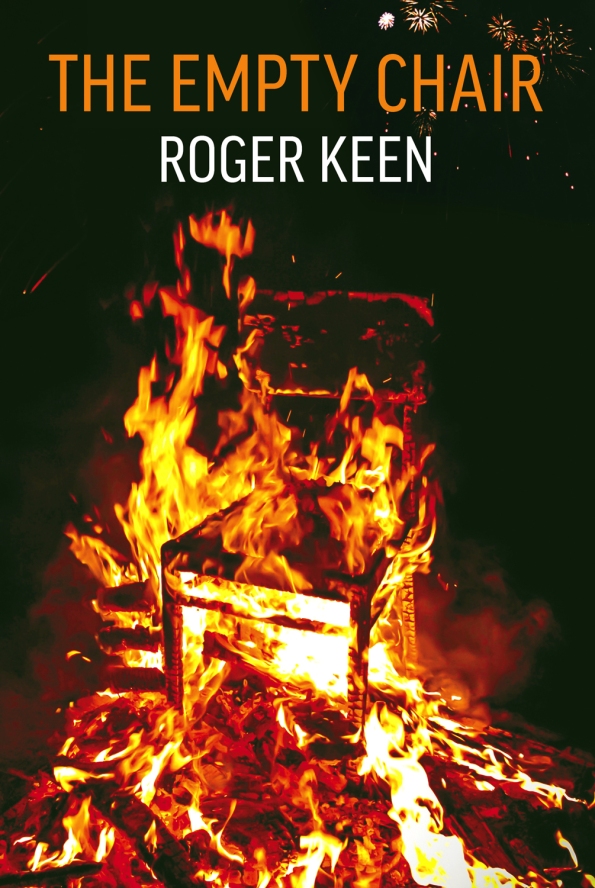Archive
Literary Stalker – A ‘Gay Novel’ by a Straight Author
As part of The Ginger Nuts of Horror LGBTQ+ Horror Month, I have penned this piece concerning the rationale and technical challenges I faced in producing Literary Stalker as a ‘gay novel’, with references to gay novelists Alan Hollinghurst, William Burroughs, Joel Lane and others. William Burroughs’s second novel Queer was a particular inspiration, as was Joel Lane’s From Blue To Black. Queer photo: 1986 Picador edition.
At the Hay Festival last year, prominent gay novelist Alan Hollinghurst declared that the gay novel has had its day. He said that in earlier decades it possessed urgency and novelty, but now it is ‘…dissolving back into everything else and we are living increasingly in a culture where sexuality is not so strongly defined.’ Broadly speaking, Hollinghurst feels that as homosexuality is now so familiar and generally accepted, the ‘gay novel’ no longer has an edge.
Yet the recent story of Matt Cain and The Madonna of Bolton (published in 2018), shows there is some vibrancy left in the phenomenon of the ‘gay novel’. A tale of a northern gay lad growing up in the 1980s and worshipping the singer Madonna, Cain’s novel was widely rejected by publishers for being ‘too gay’, ‘a little niche’ and also for not having the highbrow literary credentials of Hollinghurst’s work. But through a crowdfunding campaign and the support of backers such as David Walliams, Mark Gatiss and Lisa Jewell, it was published and proved popular with a large audience.
Nonetheless Hollinghurst does have a point. In an age where gay love stories and their tribulations are featured universally in screen dramas and soaps such as Coronation Street, what can the ‘gay novel’ do to be transgressive again? It has become a well-trodden path with familiar tropes, and so has the status of a genre one can dabble in, such as horror or science fiction. Which is the precise point where I personally interfaced with its world. For reasons of plot expediency, I set out, as a straight man, to manufacture – to the best of my ability – a ‘gay novel’.
Read more on: The Ginger Nuts of Horror
To read other Ginger Nuts Literary Stalker pieces, please follow these links:
Book Excerpt: Literary Stalker
 The first of three pieces featuring on the prestigious Ginger Nuts of Horror site, this excerpt is taken from Chapter 11 of Literary Stalker, about half way through, dealing with a tipping point in stalker Nick’s obsession where his intent turns nasty. It is set at a fictional horror convention called ‘Medusacon’ in London in 2006, drawing on many convention experiences. It also features cameo appearances from several real-life horror writers: Neil Gaiman, Joe Hill, Kim Newman and Brian Lumley.
The first of three pieces featuring on the prestigious Ginger Nuts of Horror site, this excerpt is taken from Chapter 11 of Literary Stalker, about half way through, dealing with a tipping point in stalker Nick’s obsession where his intent turns nasty. It is set at a fictional horror convention called ‘Medusacon’ in London in 2006, drawing on many convention experiences. It also features cameo appearances from several real-life horror writers: Neil Gaiman, Joe Hill, Kim Newman and Brian Lumley.
Medusacon 2006 was held at a big swish hotel in London’s Docklands, with commanding views of the Thames, Canary Wharf and the pristine Docklands Light Railway providing a cool backdrop to the proceedings. All the ‘usual suspect’ horror, fantasy and sci-fi writers were present, including Stan, Darren, Crimpy, Otto and Darius, together with more illustrious scribes and the Guests of Honour. Film critic and writer Kim Newman attended, in Victorian Gothic mode as usual, with his long flowing hair and full moustache, silk waistcoat and cravat. Horror veteran Brian Lumley enlivened the atmosphere, looking awesome in a white suit and shirt with silver collar tips, and a leather bolo tie and ornate aiguillette around his neck. And horror newcomer Joe Hill floated around enigmatically, with his jet black hair and equally jet black full beard, having recently come out as the son of Stephen King. I liked the look of him, but of course he was married and straight. And besides I was after bigger fish, as the Guests of Honour were Neil Gaiman and the man himself: Hugh Canford-Eversleigh.
Read more on: The Ginger Nuts of Horror
William S. Burroughs: A Life
 What follows is an extended review of Barry Miles’s biography: William S. Burroughs: A Life (American title: Call Me Burroughs: A Life), which was published in February 2014 to mark the centenary of Burroughs’s birth.
What follows is an extended review of Barry Miles’s biography: William S. Burroughs: A Life (American title: Call Me Burroughs: A Life), which was published in February 2014 to mark the centenary of Burroughs’s birth.
The review first appeared in the Psychedelic Press magazine Vol IV 2014, and has never before been online. It is reprinted now because of its in-depth quality and the fact it provides a whistle-stop tour of Burroughs’s life through the lens of Barry Miles’s updated facts.
Barry Miles is no stranger to writing about William Burroughs or the wider Beat scene. He had known Burroughs and been part of his circle since the mid-1960s, when Burroughs lived in London, and has catalogued his work, collaborated with others on restored texts of his novels and has written a portrait of Burroughs, El Hombre Invisible, which for many years has served as the standard primer or introduction to the life and work of the man. Miles has also penned biographies of Kerouac and Ginsberg and other works related to the Beats, such as The Beat Hotel. He therefore seems ideally equipped to write this new definitive biography of Burroughs, published to coincide with the centenary of the author’s birth in 1914.
As he tells us in the introduction, Miles had a hand in the making of the myth of Burroughs, a phenomenon which has now become so powerful that it has ensured Burroughs a place as a character in history independent of his place in the hall of great writers. It was in 1984 that Miles discovered a lost Burroughs manuscript, Interzone, which together with another from the past that he’d previously uncovered was instrumental in getting Burroughs a new publishing deal. That other manuscript was Queer, Burroughs’ second novel, written in the early ’50s but never published at that time. In the ’85 edition Burroughs supplied a short introduction, a few pages of autobiographical background that were to prove seminal in establishing the Burroughs ‘myth’.
Read more on: Medium






